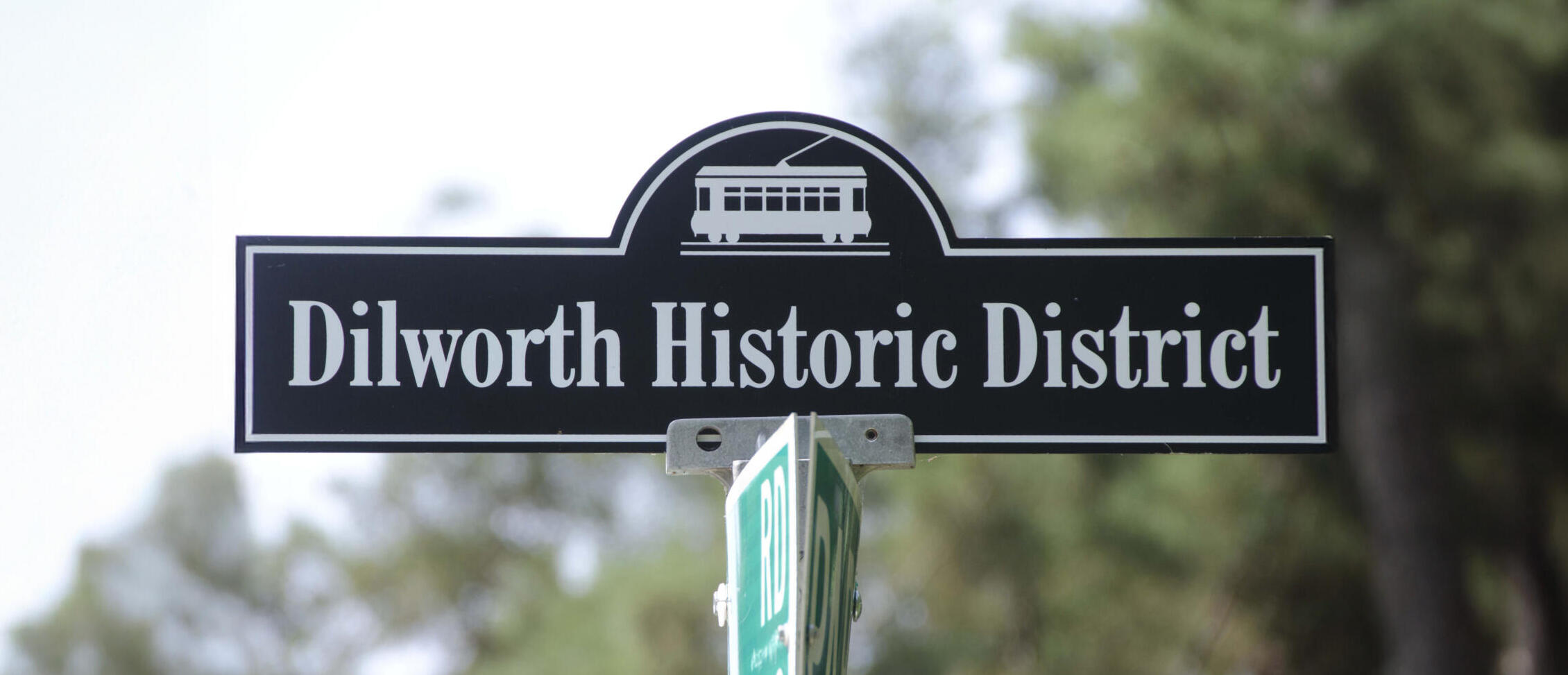June 18, 2025
Dilworth Charlotte: A Historic Neighborhood’s Story and Community Legacy

Dilworth, Charlotte’s first streetcar suburb, stands as a testament to the city’s rich history and enduring community spirit. Established in the late 19th century just south of Uptown, Dilworth Charlotte has evolved from a pioneering residential development into one of the Queen City’s most beloved neighborhoods. Tree-lined avenues, front-porch bungalows, and iconic landmarks fill its streets, creating an ambiance that is both historic and vibrantly alive.
This article explores the origins, architecture, and cultural identity of the Dilworth neighborhood – and how institutions like Dilworth Center have become an authentic part of its legacy and ongoing value in the community.
The Historical Roots of Dilworth, Charlotte
Early Dilworth was laid out on a grid plan, mirroring Charlotte’s original city wards. Latta added attractive amenities to lure buyers, most famously Latta Park, a 20-acre park designed by landscape architect Joseph Forsyth Johnson. Opening in 1891, Latta Park quickly became a recreational hotspot – featuring a lake, pavilion, greenhouse, and picnic grounds for families who rode the streetcar out to enjoy a day in the “country.” The neighborhood’s success was such that by 1911, Charlotte was booming and Latta sought to expand Dilworth beyond the original plat.




Rather than extend the grid, Latta hired the renowned Olmsted Brothers landscape architecture firm in 1911 to plan Dilworth’s next phase. The Olmsteds (sons of the famous Frederick Law Olmsted) introduced gently curving streets that followed the natural contours of the land. This was a departure from the rigid grid downtown and lent Dilworth a picturesque quality. Although their full plan was never completely realized, the curvilinear roads and park-like landscape they envisioned became a model for later Charlotte neighborhoods.
By the early 20th century, Dilworth was firmly established as a desirable address for Charlotte’s growing middle class. The neighborhood was initially designated as the city’s “Eighth Ward” due to its early incorporation into the city fabric. Streetcar service continued to be the lifeblood of Dilworth until the 1930s when the rise of the automobile led to the end of the trolley era in 1938. However, the legacy of that streetcar boom lives on: Car No. 85, the last original trolley to run, was preserved and later restored to operate on a heritage line between nearby South End and Uptown since 1996 – a nostalgic reminder of Dilworth’s transit-centered origin.
Throughout the decades, Dilworth maintained its appeal even as Charlotte expanded outward. In 1987, much of Dilworth was recognized on the National Register of Historic Places for its significance as Charlotte’s first suburb, with a boundary expansion added in 2000 to cover later growth. The city also designated Dilworth as a Local Historic District in 1983 (with additions in 1992), ensuring that its unique character will be protected. Walking through Dilworth today, one can easily sense how past and present blend seamlessly – from the Victorian homes that hark back to the 1890s, to the bustling modern eateries now occupying century-old buildings.


Architectural Charm and Landmark Sites in Dilworth
The architectural landscape of Dilworth is both historic and diverse. Strolling the residential blocks, you’ll encounter an array of late 19th- and early 20th-century home styles that give the neighborhood its storybook charm. The most prevalent are classic Craftsman bungalows, with their wide front porches, tapered columns, and gabled roofs shaded by Charlotte’s signature oak canopy. These cozy bungalows (often one-and-a-half stories) sit shoulder-to-shoulder with the occasional Queen Anne Victorian home adorned in ornate trim and vibrant paint schemes. On Dilworth’s premier streets like East Dilworth Road and West Dilworth Road, you’ll even find a few larger Colonial Revival homes – two-story residences with symmetrical facades and elegant columns harkening to early American styles. This blend of architectural influences led the National Register listing to cite Dilworth’s styles as ranging from “Late Victorian” to “Bungalow/Craftsman” and early-20th-century revival designs.Key architectural features of Dilworth’s homes and streetscapes include:


- Stately Front Porches: Nearly every historic Dilworth house has a welcoming front porch. These porches – often furnished with rocking chairs and ceiling fans – foster the neighborly atmosphere by encouraging residents to relax and greet passersby. They are a defining element of Dilworth’s community-oriented design.
- Mature Tree Canopy: Towering oak trees line the sidewalks, providing shade in the summer and a blaze of color in the fall. These trees, some over a century old, arch over the streets and form a green tunnel that enhances Dilworth’s beauty. The neighborhood’s commitment to its trees continues today through initiatives like the Tree Canopy Committee of the Dilworth Community Association, which helps protect this urban forest.
- Historic Detailing: Many homes retain original details such as wood siding, decorative shingles, leaded-glass windows, and intricate gable brackets. The care given to preserving these details is evident – a walk down a Dilworth block feels like stepping back in time. Owing to Local Historic District guidelines, renovations or new constructions must complement the historic character, ensuring these period details remain intact for future generations.


Dilworth’s architectural charm isn’t limited to houses. The neighborhood also hosts several notable landmarks. One such treasure is the Cathedral of Saint Patrick, a Neo-Gothic church built in 1939 on Dilworth Road East. The limestone-clad cathedral – with its pointed-arch windows and twin tower façades – is an architectural centerpiece and carries great significance: it is the mother church and seat of the Roman Catholic Diocese of Charlotte. In 1987, the Cathedral was listed as a contributing property within the Dilworth Historic District on the National Register, cementing its status as part of the neighborhood’s historic fabric.
Another landmark institution is Atrium Health Carolinas Medical Center, located along Blythe Boulevard in Dilworth. Originally opened in 1940, this major hospital (the region’s only Level I trauma center) anchors the community and exemplifies Dilworth’s balance of old and new. The hospital’s campus has grown over the years, but its presence in Dilworth underscores how the neighborhood is not just a time capsule of old homes – it’s also a hub of modern life and essential services.
Meanwhile, Dilworth’s Latta Park remains a cherished green oasis at the heart of the neighborhood. Beyond its historic origins, today the park features playgrounds, walking trails, and sports courts nestled under sprawling trees. Neighbors gather here for everything from pickup basketball games to open-air concerts. The park’s pavilion, harkening back to the original 1890s structure, is often abuzz with community events and casual picnics alike. Together, the architecture and public spaces of Dilworth create an environment with a human scale and an inviting warmth – one that continues to draw people seeking a slice of historic charm in the middle of a modern city.


A Community of Tradition, Character, and Vibrancy


While its houses give Dilworth a distinctive look, it’s the people and community spirit that give the neighborhood its heart. Dilworth has a long tradition of active, engaged residents who take pride in their community. As early as 1948, neighbors formed the Dilworth Community Association (DCA) to represent local interests – and it’s still going strong today. Thanks to these dedicated volunteers, Dilworth has fostered traditions that have lasted for decades, strengthening the bonds among those who call it home.
One of the neighborhood’s most beloved events is the annual Dilworth Jubilee. First held in 1972 as a simple block party, the Jubilee has evolved into a free family-friendly festival every spring, sponsored by the community association. Neighbors of all ages flock to Latta Park for live music, food trucks, and even a costumed pet parade as part of the day’s fun. The Jubilee’s focus is purely on community camaraderie – there are no commercial vendor fees or outsider agendas, just Dilworth residents celebrating being “Dilworthians” together. The fact that this tradition has carried on for over 50 years speaks to the close-knit identity of the area.
Another grand tradition is the Dilworth Home Tour, held each fall. Since 1973, generous homeowners have opened their doors to the public for a weekend to showcase Dilworth’s historic houses and renovated gems. The Home Tour isn’t just about admiring architecture; it’s a true community collaboration. Hundreds of volunteers pitch in to organize and staff the event, and proceeds support neighborhood improvements and local charities via the Dilworth Cares program. This mix of hospitality and philanthropy – inviting strangers in to share the neighborhood’s heritage, while raising funds to give back – encapsulates the community-minded ethos that defines Dilworth.
Day to day, Dilworth maintains a friendly, village-like atmosphere despite being on the doorstep of Charlotte’s urban center. East Boulevard, the main commercial corridor cutting through the neighborhood, bustles with activity. Interestingly, many of East Boulevard’s businesses inhabit converted historic homes, preserving the residential feel even as you browse boutiques or dine at restaurants. It’s not uncommon to enjoy coffee on the porch of a former bungalow turned café, or to visit a doctor’s office or yoga studio operating inside what was once a single-family house. Popular eateries and hangouts make East Boulevard a destination not just for Dilworth locals but for all Charlotteans.


Safety and neighborliness go hand-in-hand here. Dilworth enjoys lower crime rates than many parts of the city, thanks in part to vigilant neighbors and community watch groups. On any given evening, you’ll see residents out on walks, greeting each other by name. Many families are drawn by the neighborhood’s top-notch schools (like the historic Dilworth Elementary campus) and playgrounds, as well as its proximity to jobs Uptown. Young professionals love the area for its walkability and character, while many older residents have lived here for decades, providing continuity. This diverse mix of ages and backgrounds contributes to a welcoming, village vibe.
In Dilworth, there is a palpable sense of local pride. The neighborhood’s logo – a streetcar flanked by oak branches – appears on T-shirts and flags, and the community association’s quarterly newsletter keeps everyone informed on everything from zoning issues to lost pets. “Dilworth has it all” is a common refrain: historic charm, modern convenience, and a genuine community where people look out for one another. These qualities make it clear why Dilworth remains one of Charlotte’s most coveted neighborhoods year after year.
Dilworth Center: A Pillar of the Community’s Legacy
Amid Dilworth’s homes and institutions, one organization embodies the neighborhood’s legacy of care and authenticity: Dilworth Center. Originally located at 429 East Boulevard, and currently located at 2240 Park Road – both in the heart of the neighborhood – Dilworth Center is a non-profit outpatient facility dedicated to alcohol and drug addiction recovery. Its presence in Dilworth spans over 35 years, during which time it has become “the key to recovery for thousands” of individuals and families in Charlotte. Far from being an outsider business capitalizing on a trending name, Dilworth Center is deeply rooted in the community’s fabric – a true product of Dilworth’s compassionate spirit and one that continues to enhance the neighborhood’s ongoing value.
Founded in 1990, Dilworth Center deliberately chose Dilworth Charlotte for its home at 429 East Boulevard. In 2005, Dilworth Center moved locations, converting a large two-story house built in the early 1900s into a place of healing. The facility itself is set in a historic, welcoming space, its interior renovated and expanded to meet modern needs while retaining a warm, homelike atmosphere. Tucked behind a small business park just off Park Road, the center enjoys a discreet location that provides privacy and anonymity to those seeking help – very much in line with the neighborhood’s respectful, close-knit nature.




Over the decades, Dilworth Center has grown into one of Charlotte’s most trusted recovery resources, consistently guided by its non-profit mission. The center’s highly credentialed staff – from master’s-level counselors to a board-certified addiction psychiatrist – have collectively hundreds of years of experience, but they pair that expertise with a personal touch that resonates in a neighborhood built on neighborly care. The organization offers a range of programs tailored to different needs, including intensive outpatient treatment for adults, adolescents, and young adults, as well as family support services and aftercare programs for alumni. This comprehensive, family-oriented approach means the center not only treats individuals, but also helps heal the broader family and community affected by addiction.
Importantly, Dilworth Center’s longstanding presence in the neighborhood has made it a fixture of Dilworth’s legacy. Generations of Charlotte residents can recall a friend, colleague, or relative who found help at Dilworth Center. By its own estimates, the center has unlocked new lives in recovery for thousands of people since its inception. “For 35 years, Dilworth Center has been the key to recovery for thousands in Charlotte and the surrounding region,” notes the Charlotte Area Chamber, underscoring the profound impact the center has had. Many of those individuals were local to Dilworth and nearby Charlotte metropolitan neighborhoods, meaning the center has quietly strengthened countless families right here in the community. Alumni often continue to engage through weekly meetings and volunteer projects, creating a supportive recovery community within Dilworth that extends the sense of fellowship the neighborhood is known for.
Dilworth Center’s authenticity stands in stark contrast to the practices of some businesses that have tried to trade on the Dilworth name without true ties to the area. In an age of online search and marketing, it’s not uncommon to see organizations or advertisers use “Dilworth” in their name or keywords simply to convey an image of quality or locality – even if they are not located in, or historically connected to, the neighborhood. Savvy locals know the difference. Dilworth Center has earned its name the right way: by being an integral part of the community’s story. It didn’t adopt the Dilworth identity for marketing purposes; it is Dilworth, through and through – from its location in a historic home, to its decades of service to local families, to its reputation as a genuinely community-oriented provider. When people walk through Dilworth’s streets and see the discreet sign for Dilworth Center, they recognize it not as an interloper, but as a pillar of the neighborhood – one that neighbors trust and are proud of, much like the schools, parks, and churches that share the Dilworth name.
The Dilworth Center’s ongoing success and expansion are also a boon to the neighborhood’s value. In recent years, the center completed a thoughtful renovation and expansion of its facility, allowing it to serve more people than ever before while still maintaining a homelike environment. This investment not only solidifies the center’s future in Dilworth but also reflects the neighborhood’s broader narrative of balancing growth with preservation. Just as older homes are updated for modern living in Dilworth, the center proved that even community institutions can innovate and grow without losing their historic soul. For residents, having a renowned, CARF-accredited recovery center next door is a point of pride – it aligns with Dilworth’s identity as a place that cares deeply about quality of life and the well-being of its people.


Sources:
- PDF Map – Map of Dilworth's Historic District
- Charlotte Mecklenburg Library – Biography of Edward Dilworth Latta
- Charlotte Mecklenburg Library – Latta Meets Edison
- National Register of Historic Places Nomination – Dilworth on Wikipedia
- Dilworth Community Association – Neighborhood history, Jubilee, and Home Tour info
- Dilworth Center – Official website
- Cathedral of St. Patrick – St. Patrick’s historical reference
- Charlotte History - Including a Section on Dilworth
- Charlotte Area Chamber of Commerce - Dilworth Center







